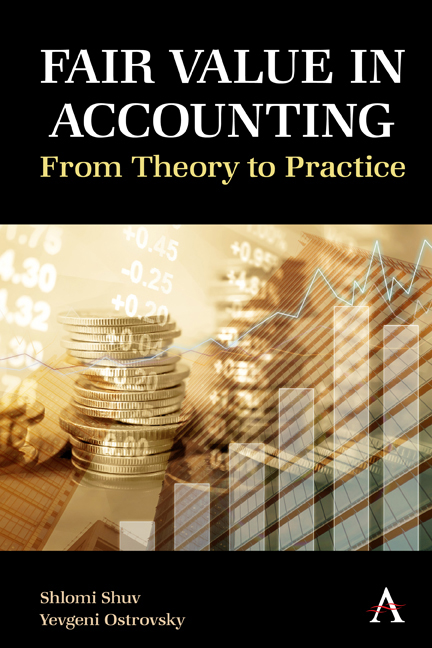Book contents
- Frontmatter
- Contents
- Preface
- Chapter 1 Background
- Chapter 2 Definition and Scope of Fair Value
- Chapter 3 Identifying the Asset or Liability to Be Measured
- Chapter 4 Determining the Market in Which the Transaction Will Take Place
- Chapter 5 Identifying Market Participants
- Chapter 6 Defining the Transaction Price
- Chapter 7 Definition of an Orderly Transaction
- Chapter 8 Fair Value at Initial Recognition
- Chapter 9 Application to Nonfinancial Assets
- Chapter 10 Measuring Fair Value of Liabilities and Equity Instruments
- Chapter 11 Application to Financial Instruments with Netting Positions
- Chapter 12 Valuation Techniques
- Chapter 13 Disclosure Provisions
Chapter 5 - Identifying Market Participants
Published online by Cambridge University Press: 15 September 2022
- Frontmatter
- Contents
- Preface
- Chapter 1 Background
- Chapter 2 Definition and Scope of Fair Value
- Chapter 3 Identifying the Asset or Liability to Be Measured
- Chapter 4 Determining the Market in Which the Transaction Will Take Place
- Chapter 5 Identifying Market Participants
- Chapter 6 Defining the Transaction Price
- Chapter 7 Definition of an Orderly Transaction
- Chapter 8 Fair Value at Initial Recognition
- Chapter 9 Application to Nonfinancial Assets
- Chapter 10 Measuring Fair Value of Liabilities and Equity Instruments
- Chapter 11 Application to Financial Instruments with Netting Positions
- Chapter 12 Valuation Techniques
- Chapter 13 Disclosure Provisions
Summary
Another significant key element of the definition of the fair value is the use of assumptions that would have been made by market participants when pricing an asset or a liability, since the measurement is not specific to the reporting entity. Accordingly, after the characteristics of the item and the relevant market are defined (for more information, see Chapters 3 and 4), the market participants in a specific market should also be identified, in a manner that is consistent with the nature of the asset or liability and with the preliminary identification of the market in which the hypothetical transaction will take place to sell the asset or transfer the liability being measured.
The reporting entity is required to identify the characteristics that are generally unique to participants in the market in which the measurement is being made, but it is not necessarily required to identify specific participants (e.g., to specifically identify the particular buyers that may participate in the relevant transaction).
Market participants are defined as buyers and sellers in the principal market (or most advantageous market, as the case may be) that have all the following characteristics:
a. They are independent of each other, that is, they are not related parties (as defined in International Accounting Standard (IAS) 24—Related Party Disclosures or Accounting Standards Codification (ASC) Topic 850—Related Party Disclosures, respectively), although the price in a related party transaction may be used as an input to a fair value measurement if the reporting entity has evidence that the transaction was entered into at market terms (for more information, see Chapter 7).
b. They are knowledgeable, having a reasonable understanding about the asset or liability and the transaction using all available information, including information that might be obtained through due diligence efforts that are usual and customary. The premise here is that the knowledge and understanding of the investors will be sufficient to enable them to identify the relevant risk factors and take those factors into consideration when calculating the transaction price.
c. They are able to enter into a transaction for the asset or liability—that is, no restriction is placed on market participants that may prevent them from entering into the transaction (e.g., restrictions imposed by the Antitrust Authority or restrictions due to financial or operational capabilities).
- Type
- Chapter
- Information
- Fair Value in AccountingFrom Theory to Practice, pp. 45 - 50Publisher: Anthem PressPrint publication year: 2022



